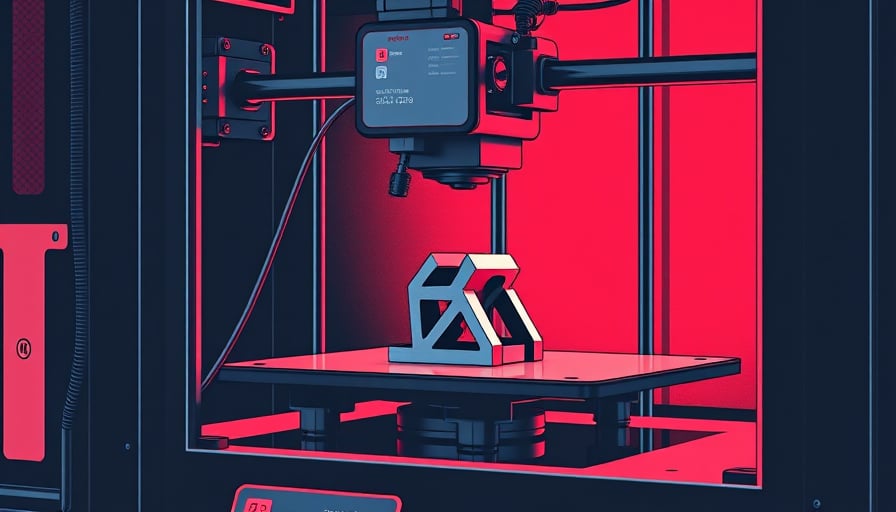Stratasys Ltd. Drives a Surge in Precision Medicine and Industrial Expansion
Stratasys Ltd. (NASDAQ: SSYS) has, in the span of two days, positioned itself at the nexus of cutting‑edge medical training, high‑performance metal additive manufacturing, and the burgeoning on‑demand dental laboratory sector. The company’s strategic moves are not mere incremental advances; they represent a decisive pivot toward sectors where 3‑D printing can deliver unmistakable value.
1. Pioneering 3‑D‑Printed Surgical Training in Europe
On 18 Nov 2025, Stratasys announced that its Digital Anatomy Solution, powered by PolyJet technology, has been adopted by Addion GmbH and Eyecer.at GmbH to create Europe’s first 3‑D‑printed eyelid‑surgery training models. The University of Innsbruck’s Anatomical Institute already uses the solution, underscoring its clinical credibility.
- Realism and Detail – The PolyJet system replicates skin, muscle, and fat layers with “lifelike precision,” enabling surgeons and students to rehearse delicate procedures without risking patient safety.
- Educational Impact – By simulating rare or complex pathologies, these models elevate the skill set of medical professionals, directly translating to improved patient outcomes.
- Strategic Advantage – This partnership places Stratasys as the de facto provider of high‑fidelity anatomical models in a market that values realism, a niche where competitors struggle to match PolyJet’s resolution.
The announcement signals a broader trend: healthcare institutions increasingly seek tangible, patient‑specific training tools. Stratasys’ early entry secures a first‑mover advantage in a sector projected to grow as surgical techniques become more complex and personalized.
2. Breaking the Polymer Mold: Metal Additive Manufacturing
Earlier on 17 Nov 2025, Stratasys revealed its expansion beyond polymers with the introduction of production‑grade metal manufacturing technology. Although the press release offers limited details, the move carries profound implications:
- Diversification – Metal printing opens access to aerospace, automotive, and medical implant markets that demand high‑strength, durable components.
- Revenue Streams – Metal parts are typically priced significantly higher than polymer equivalents, potentially boosting margins.
- Competitive Edge – Few polymer‑focused 3‑D printers offer integrated metal solutions, positioning Stratasys as a unique all‑material platform.
This development aligns with the company’s historical trajectory of innovation, from early polymer printers to advanced multi‑material systems. It demonstrates strategic foresight: by 2025, the additive manufacturing market is shifting toward hybrid solutions that combine the design freedom of polymers with the mechanical robustness of metals.
3. Capturing the On‑Demand Dental Lab Market
Stratasys is also poised to capitalize on the rapidly expanding on‑demand dental laboratory market. Recent industry reports project the global market size to reach $8.70 billion in 2025, up from $7.94 billion in 2024 (CAGR 9.6%). Key drivers include:
- Digital Impressions – The transition from analog to digital workflows has increased demand for rapid, high‑precision dental components.
- Cosmetic Dentistry – Rising patient expectations for aesthetic results heighten the need for customized crowns, bridges, and aligners.
- Convenience and Speed – On‑demand labs can deliver finished products in days, a critical advantage for busy dental practices.
Stratasys’ high‑resolution printers, particularly those capable of producing fine surface details and complex geometries, are ideal for dental applications such as crowns, bridges, and orthodontic devices. By integrating its digital anatomy technology, Stratasys can further enhance the realism of dental models, offering a complete pipeline from design to finished product.
4. Market Position and Financial Reality
Despite these ambitious moves, Stratasys’ market cap hovers at $761 million, and its stock trades near $8.53—a modest valuation relative to its technological breadth. The price‑to‑earnings ratio of ‑5.72 reflects negative earnings, a common hurdle for high‑growth, capital‑intensive companies. Yet, the strategic initiatives described above could catalyze a turnaround:
- Revenue Growth – Metal printing and medical training contracts can unlock higher‑margin contracts.
- Cost Synergies – Shared R&D across polymer and metal platforms can reduce per‑unit development costs.
- Market Leadership – Early adoption in critical sectors positions Stratasys as a go‑to partner for institutions seeking advanced 3‑D solutions.
Investors will scrutinize whether Stratasys can translate these technological advancements into sustained profitability. The company’s historical resilience, coupled with a clear roadmap into high‑margin markets, offers a compelling narrative of potential upside.
5. Conclusion
Stratasys Ltd. is redefining its core mission: from a niche polymer printer to a comprehensive additive manufacturing ecosystem that spans life‑science education, high‑performance metal parts, and the lucrative dental lab market. Each strategic thrust—European surgical training models, metal printing technology, and alignment with the on‑demand dental sector—underscores a single, audacious objective: to become the indispensable platform that turns digital designs into tangible, high‑value objects.
The company’s next challenge will be to convert this technological momentum into robust earnings, proving that its diversified portfolio can deliver both market dominance and shareholder value. Only time will confirm whether Stratasys’ bold steps translate into a sustainable competitive advantage or merely add noise to an already crowded industry.




